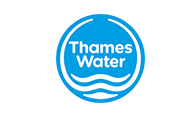Firstly, we identified all the factors that could change how much water is available in the future and how much more we’ll need to supply a growing population. We developed a range of long-term forecasts to help us understand what could happen to our water supplies in the years to come. We used this to develop an adaptive plan, which considers a range of different futures.
We also looked at the future water needs of the other main water users in the region and how much they’ll need to produce their products and services in the years to come.










